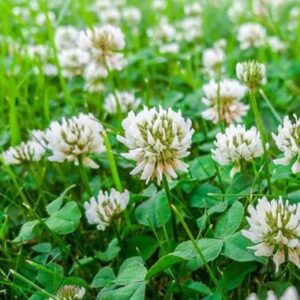Scientific Name: Setaria pumila (Poir.
Description:
Likely introduced to North America from Europe and Asia, both species have spread throughout Pennsylvania and most of the United States. Yellow and green foxtail persist in many different soil types and can tolerate wet soils and moderate drought conditions. These species are best adapted to sunny areas but can also survive in partially shaded lawns.
Yellow and green foxtail reproduce by seeds, which are easily disseminated by mowers, shoes, animal fur, and transfer of soil. Homeowners and professional turf managers typically find the coarse texture and seedheads of these grasses objectionable in turfgrass. Both species are relatively easy to identify and can be controlled using good cultural practices and grass herbicides applied at the correct time of year and growth stage.
Life Cycle:
Yellow foxtail and green foxtail belong to the Poaceae family and have summer annual life cycles. Seeds of these species begin to germinate and emerge from soil in spring and continue to emerge through early to mid-summer. Seeds can germinate when soil temperatures reach 65°F; optimum germination temperatures range from 70 to 85°F. Following germination and emergence, foxtail plants make vegetative growth during late spring and summer. Seedheads are produced from July to September, and each plant can generate thousands of seeds depending on the number of seedheads per plant and environmental conditions. Yellow and green foxtail plants turn brown and die following frost events in mid to late fall. Seeds produced in late summer and early fall give rise to new plants the following spring and summer, given proper conditions for germination and emergence.
Identification:
Leaf blades of yellow and green foxtail are pale to medium green and coarse, approximately ¼ to ½ inch wide and 2 to 10 inches in length, with a prominent midvein running lengthwise down the center and pointed at tips. Both species have a fringe of short (~1 mm) fine hairs serving as a ligule, and auricles are lacking in the collar region (located at the junction of the leaf blade and sheath). Yellow foxtail can be distinguished from green foxtail by the presence of long sparse hairs at the base of the leaf blade on the upper surface and a lack of hairs on the leaf sheath. Green foxtail has a smooth upper leaf blade surface with no long hairs at the base, and leaf sheaths have hairy margins. Stems of both species are reddish-purple at the base. Seedheads of yellow and green foxtail are upright spike-like panicles with awns projecting from florets, imparting a bristle-brush appearance. Yellow foxtail seedheads typically have a yellow-green or orange-green tinge when mature, whereas green foxtail seedheads are greener and slightly larger than yellow foxtail seedheads. Also, green foxtail florets have longer awns (sometimes called bristles) compared to those of yellow foxtail. Seeds of yellow and green foxtail are small (1 to 2 millimeters in length) and elliptical.
Cultural Control:
Foxtail species are introduced into turf stands primarily through transfer of seed on maintenance equipment, shoes, animal fur, and soil used for renovation projects. Although there is no practical way to detect seeds in soil, using soils from sites with no previous history of foxtail infestation can lessen the chances of contamination of turfgrass sites. If only a few foxtail plants are infesting a lawn, they can be removed by hand pulling or by using a trowel. Improving turf density through fertilization, irrigation during drought conditions, and use of turfgrasses well-adapted to site conditions will help reduce infestations of foxtail.
Chemical Control:
Yellow foxtail and green foxtail can be controlled with preemergence herbicides if applications are made in spring. Active ingredients that have demonstrated good preemergence control of yellow and green foxtail include prodiamine (Barricade and other prodiamine-containing products), pendimethalin (Pendulum, Pre-M, and other pendimethalin-containing products), and dithiopyr (Dimension and other dithiopyr-containing products). Selective postemergence herbicides labeled for control of yellow and green foxtail include products containing fenoxaprop-p-ethyl (Acclaim Extra and Last Call), quinclorac (Drive XLR8), and topramezone (Pylex). Be sure to follow label precautionary statements, restrictions, and directions regarding rates and timing of applications when using these herbicides.






